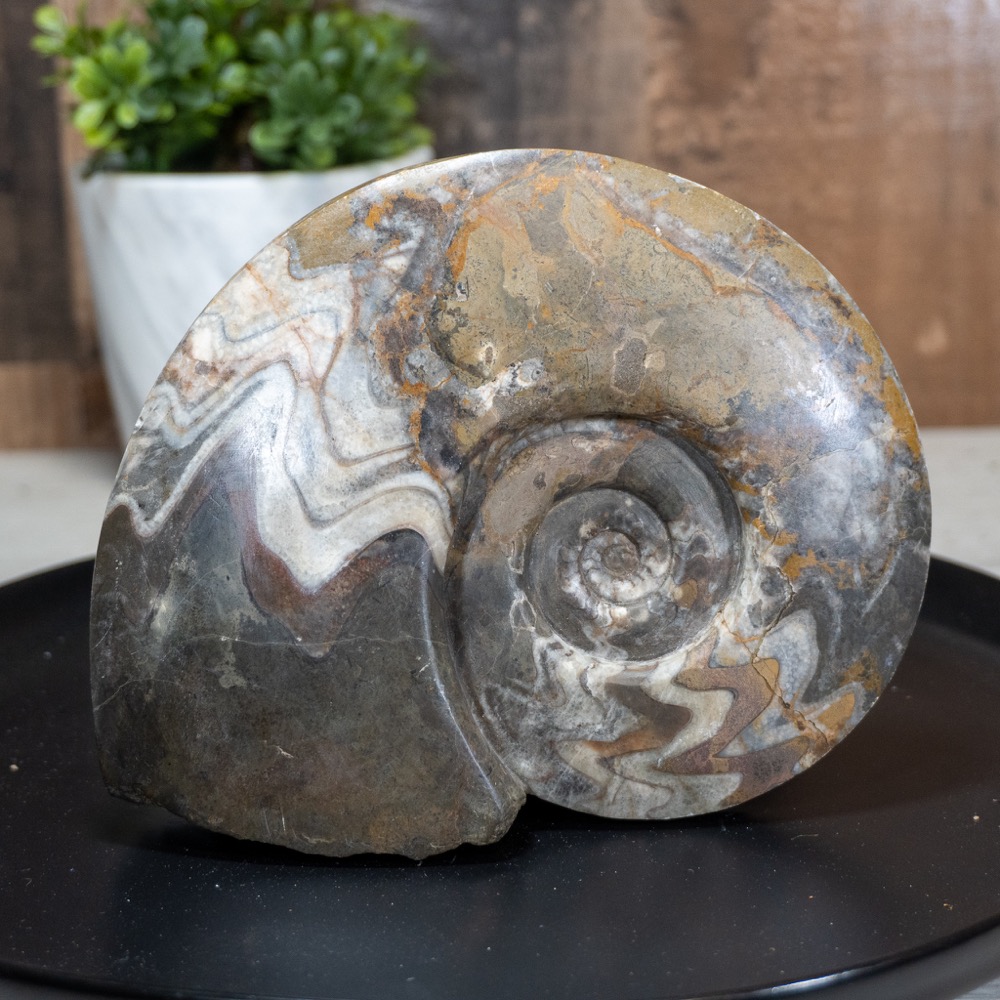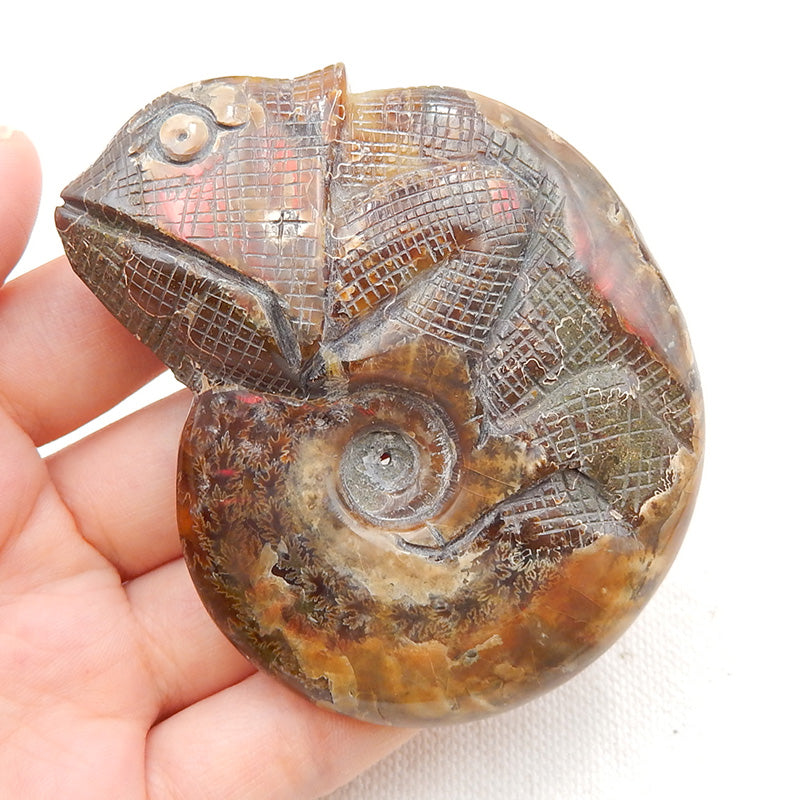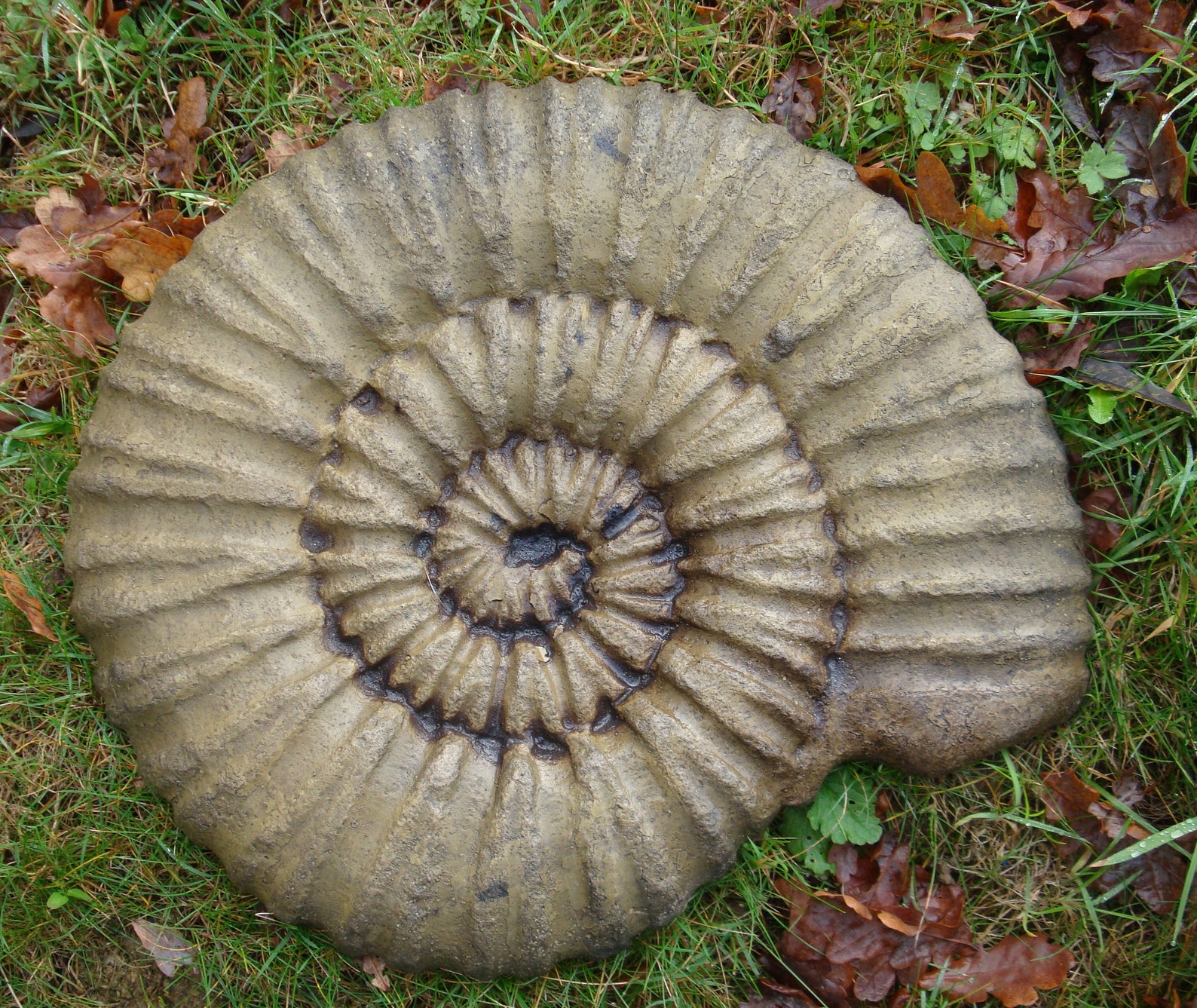

This bowling took a great deal of skill, as any vibration transmitted from the air pen towards the ribs could have damaged them. The main reason for bowling is to draw the eye to the ammonite like a fruit sat within a fruit bowl leaving a relatively tight bowl around the ammonite maintains much of the original stone surface and offers a focused look inside whilst minimising needless extra work. James made the stylistic decision to ‘bowl’ the rock around the ammonite quite tight to the shell itself. This is a decent size at 8cm and so you can only imagine how fragile and delicate those ribs were!!

With this genus of ammonite it is important to work slowly and carefully as the ribs become very narrow and pronounced as the ammonite gets bigger. James carefully started uncovering the ammonite by working down close to it with an air pen (the ZOIC Chicago), and then air abrasive techniques using dolomite powder to reveal the tops of the ribs.

You can see the ammonite shell hidden within the rock has been protected from the damaging effects of rolling around on the beach, with the exposed rib tops the only giveaway of the potential contents within.

These first moments of exploratory work suggested something perhaps a little more promising than usual inside. You can see the tiniest bit of outer whorl sticking out with only the slightly worn tops of the ribs initially showing on this nodule this has had less then a minute of cleaning to expose the shell and check the quality. You can see the tops of the ribs just peaking at about 2 o’clock on the rock.įully prepared Arnioceras sp. Not to be perturbed, James though this particular was one was worth a crack! The particular rock is usually not worth preparing as the ammonites are often crushed and poorly preserved, and therefore the difficult prep job is not worth the time in doing. Whilst not the biggest ammonite of this type ever found, its size (80mm) and quality are very uncommon from the location. ammonite was found by a couple of one of The Wobbly Fossiler’s guided walks on Charmouth beach. To use it for future projects, just locate it in the Fiction section when creating a new project.This Arnioceras sp. You only need to do the above for the first time you use the template.
#AMMONITE STONE HOW TO#
#AMMONITE STONE WINDOWS#
Scrivener v1 template | Windows (deprecated, provided for backwards compatibility) Our Scrivener template contains all of the sheets included in our Digital Goodie Bag (and in the sections below this one), along with additional templates and configuration to help you build your story.


 0 kommentar(er)
0 kommentar(er)
